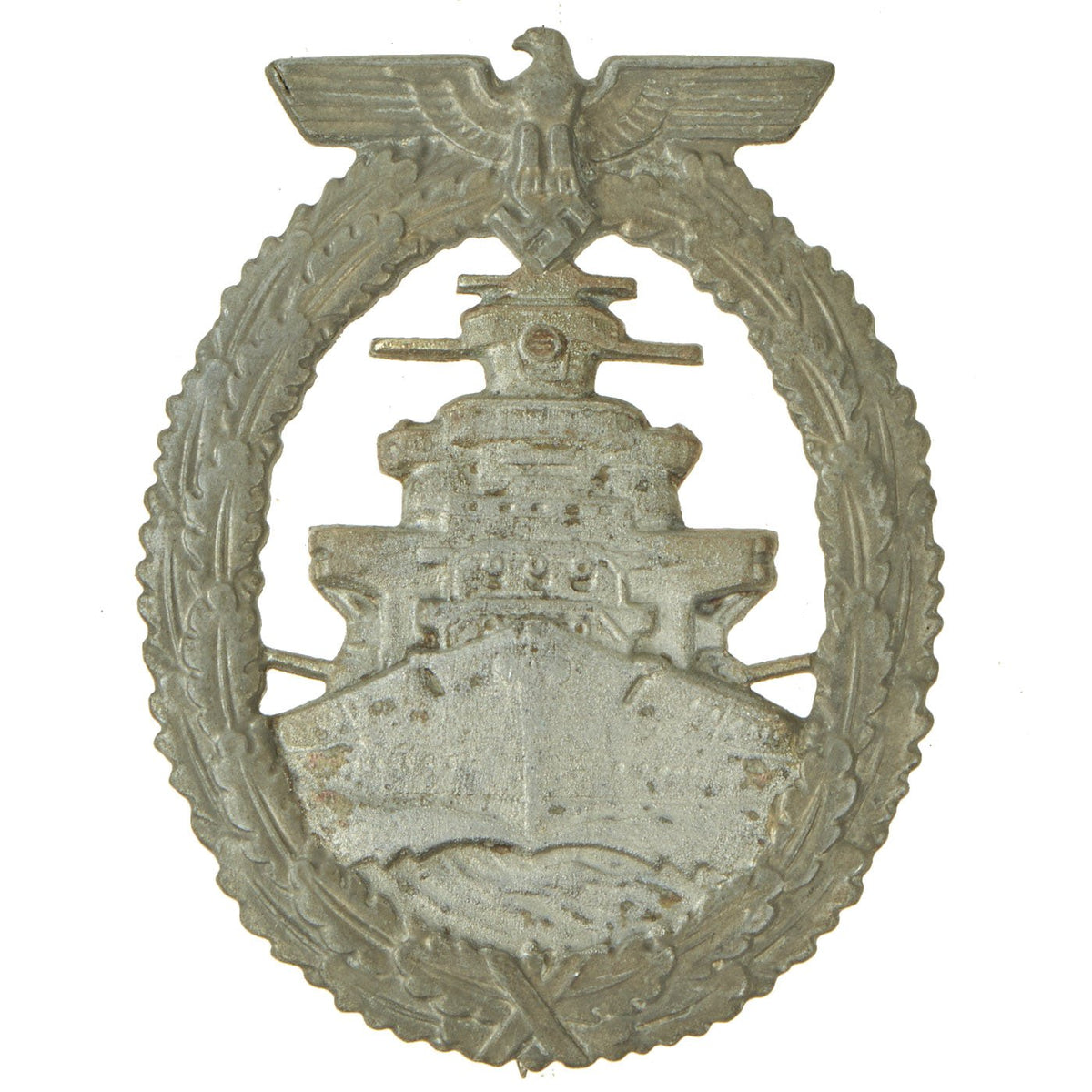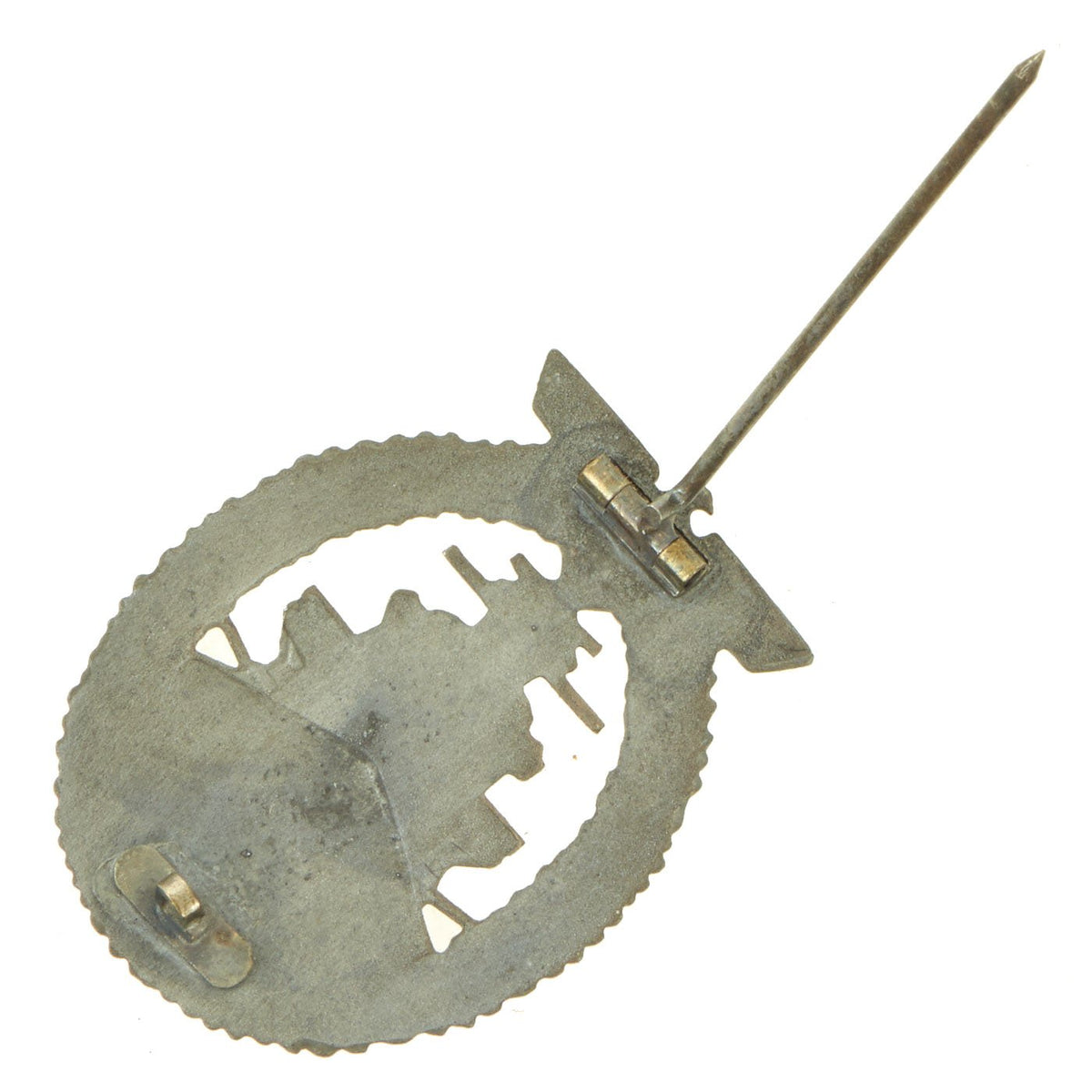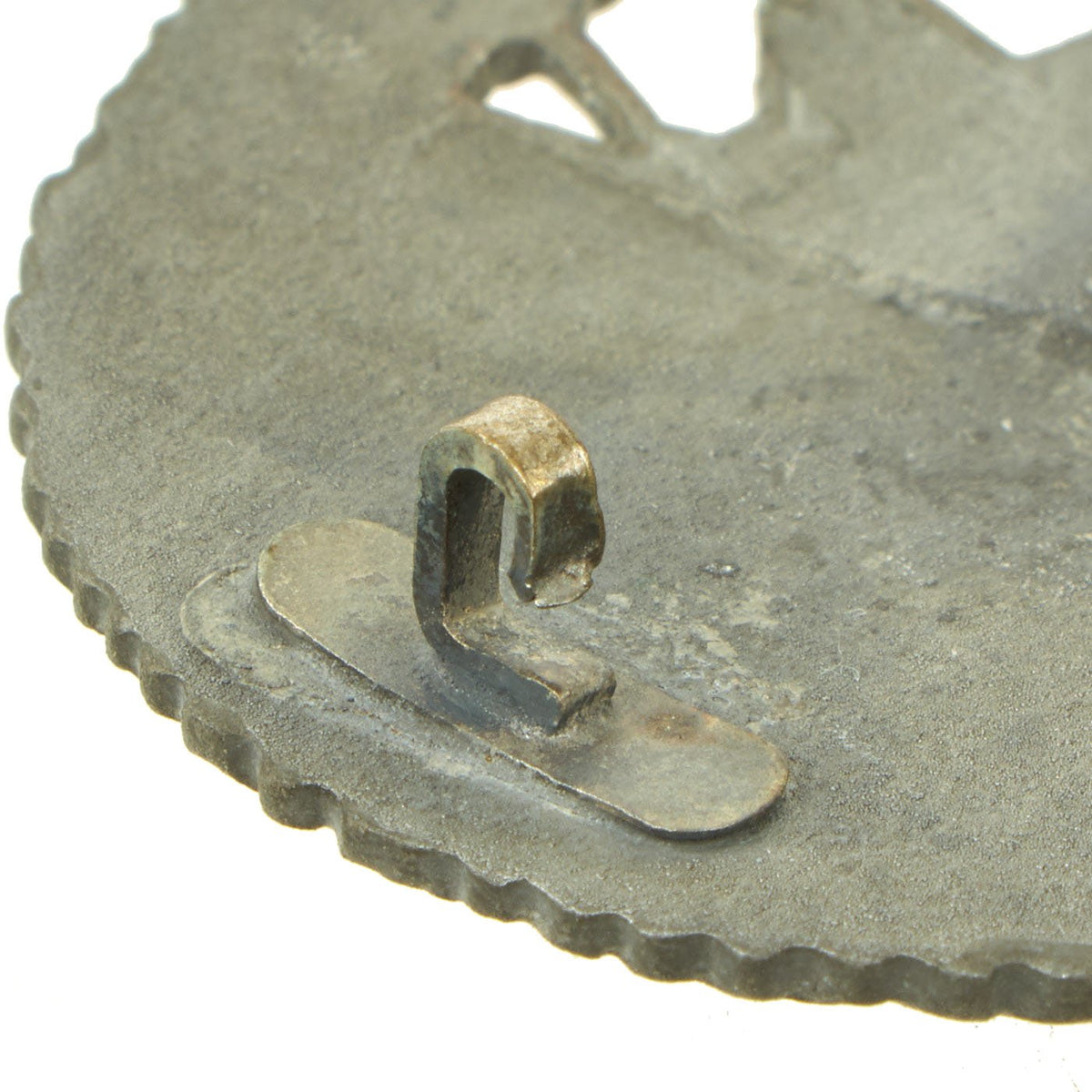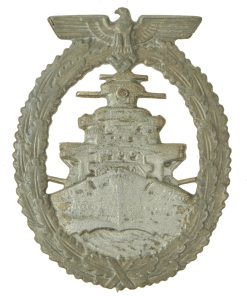Original German WWII Late High Seas Fleet Badge – Zinc Construction Original Items
$ 395,00 $ 118,50
Original Items: Only One Available. This is a very good condition Late War Flottenkriegsabzeichen der Kriegsmarine – High Seas Fleet Badge, made of Zinc alloy. Earlier in the war, these had been made of Brass with a blacked battleship in the middle, but as the war went on, they moved to zinc.
This example is in great shape, with a lovely patina, and there is still a good amount of the original silver wash on the central battleship. The back has a barrel style hinge and fully functional pin and catch. Definitely a great example!
The High Seas Fleet War Badge was instituted on April 30th, 1941 by Grossadmiral (Grand Admiral) Erich Raeder, at that time commander in Chief of the Kriegsmarine (German Navy) in recognition of naval actions, mainly deployed in actions against the British Navy. The designer and principal manufacturer of this award, was Adolf Bock of Berlin. Although the award was instituted in 1941, it could be awarded for actions prior to that date.
The High Seas Fleet War badge was initially made of brass and later of zinc. The award is easily recognizable by its dark silver German battleship coming head on at full steam, plowing through the sea at the center of the badge and producing a bow wave. The battleship is surrounded by a gold oak leaf wreath, with on the top an eagle with its wings spread, clutching a swas in its claws. The base of the wreath has a ribbon tied in the form of an X with an acorn in the lower and upper V formed by the knot. There are 8 bunches of two oak leaves on either side that make up the wreath. The tip of each leaf has a single acorn, alternatingly on the outside and inside of the wreath. The award is highly detailed, especially the ship’s ports, guns and bow wave. From the eagle’s head, the height of the award measures 57 mm and the width is 44 mm. The width of the wreath is 7 mm and the wingspan of the eagle measures 31 mm. The reverse of the award is concave and coloured black, as are the hingepin and hook assemblies. Some know makers of this award are: Adolf Bock from Berlin, (FEC. ADOLF BOCK AUSF. SCHWERIN BERLIN) Schwerin from Berlin, (SCHWERIN BERLIN 68) Friedrich Orth from Vienna, (f.o.) Rudolf Souval from Vienna, (R.S.) Richard Simm & Sohn from Gablonz ad N. (R.S.&S.) and B. H. Mayer Pforzheim. (L/18) There’s also a second version of the award, made by Mourgeon from Paris. This one is identical to the former award. The High Seas Fleet War Badge was presented in a dark blue box with blue flock base and white silk lining, or it was presented in a grey paper packet with the award name stenciled on the front. It was presented with a standard award-document. The award was worn on the lower left breast pocket, underneath the Iron Cross First Class if awarded, or equivalent grade award.
It was awarded to officers and men of the Kriegsmarine serving aboard ships of the German Fleet. This were mainly the battleships and cruisers, but also the ships that were supporting them on operations. Lower ranking personnel was nominated for the award by the commander of the battlegroup, other navy personnel was nominated by Navy Headquarters. The criteria for receiving the award were:
-12 weeks service on a battleship or cruiser, with proof of distinction and good conduct.
The number of weeks were reduced if one of these conditions were met:
– If the recipient was wounded or killed during the voyage.
– Outstanding achievements in an engagement.
– If the cruise was successful.
– Individual’s ship was sunk in action. (Bismarck, Admiral Graf Spee, Blücher)
– For participation in “Rawalpindi” and “Jan Mayen”.
– All crew members of the Scharnhorst and Gneisenau received the award in view of the operational effectiveness of the ships.
– To every sailor who was present on the Tirpitz when it was bombed and sunk by the British R.A.F. in Tromsö Fjord on November 12th, 1944.
Fast Shipping with Professional Packaging
Thanks to our longstanding association with UPS FedEx DHL, and other major international carriers, we are able to provide a range of shipping options. Our warehouse staff is expertly trained and will wrap your products according to our exact and precise specifications. Prior to shipping, your goods will be thoroughly examined and securely secured. We ship to thousands clients each day across multiple countries. This shows how we're dedicated to be the largest retailer on the internet. Warehouses and distribution centres can be located throughout Europe as well as the USA.
Note: Orders with more than one item will be assigned a processing date depending on the item.
Before shipping before shipping, we'll conduct a thorough inspection of the items you have ordered. Today, the majority of orders will be delivered within 48 hours. The delivery time will be between 3-7 days.
Returns
The stock is dynamic and we cannot completely manage it because multiple stakeholders are involved, including our factory and warehouse. So the actual stock may alter at any time. It's possible that you may not receive your order once the order has been made.
Our policy is valid for a period of 30 days. If you don't receive the product within 30 days, we are not able to issue a refund or an exchange.
You can only return an item if it is unused and in the same state as the day you received it. You must have the item in its original packaging.
Related products
Uncategorized
Uncategorized
Uncategorized
Uncategorized
Uncategorized
Uncategorized
Uncategorized
Uncategorized
Uncategorized
Uncategorized
Uncategorized
Uncategorized
Uncategorized
Uncategorized
Uncategorized
Uncategorized
Australian WWII Owen MK1 Machine Carbine SMG Custom Fabricated Replica with Sling Original Items
Uncategorized
Armored Burgonet Helmet & Polearm from Scottish Castle Leith Hall Circa 1700 Original Items













































































